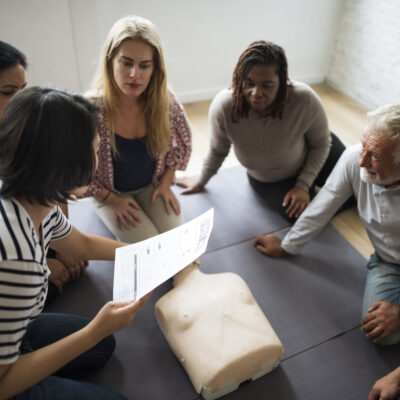Introduction
Childcare carriers have a basic responsibility to make certain the wellness, security, and wellness of kids in their care. This duty extends beyond mere guidance; it incorporates an extensive understanding of incident coverage methods. By establishing clear methods, educators can deal with emergencies successfully while guaranteeing compliance with legal and regulative requirements. In this short article, we will certainly delve into various elements of case coverage methods, checking out vital elements that foster a much safer setting for children.
Incident Coverage Protocols: Ensuring Security and Compliance in Childcare
What are combining first aid and cpr event reporting procedures? In the context of childcare, they refer to methodical procedures created for recording any events or accidents including kids. These procedures serve not just as a way of communication amongst personnel yet also as a device for improvement and compliance with safety and security guidelines. The relevance of these procedures can not be overstated; they create the foundation of efficient danger management within childcare settings.
The Value of Occurrence Reporting
Why Report Incidents?
Reporting incidents is crucial for numerous factors:
Safety Improvement: Recording occurrences aids determine patterns or repeating issues that require addressing. Legal Compliance: Regulative bodies often need paperwork to demonstrate adherence to security standards. Parental Interaction: Keeping moms and dads informed fosters trust and transparency. Training Opportunities: Examining events can lead to boosted training programs for staff.Key Elements of Efficient Reporting
A reliable case record need to include:
- Date and time of the incident Location Description of what happened Individuals involved Witnesses Actions taken
Understanding Immediate Action Responsibilities
What Are Immediate Reaction Responsibilities?
Immediate reaction duties are the activities that childcare team must take promptly adhering to an incident. This may vary from administering first aid to alerting moms and dads or authorities.

First Aid Basics in Childcare
A well-equipped child care center should have trained team with the ability of giving emergency treatment in emergencies. Understanding basic emergency treatment methods such as handling minor injuries, choking avoidance, and identifying asthma signs and symptoms is vital.
HLTAID012 Offer Emergency treatment in Education
Overview of HLTAID012 Certification
HLTAID012 qualification is particularly designed for those working in instructional settings. It covers crucial abilities like CPR, first aid responses for injuries, and just how to deal with medical emergencies including children.
Importance of Certification in Childcare Staff
Having certified team ensures that instant feedback activities straighten with finest practices. This qualification boosts educator self-confidence when dealing with emergencies.
Choking Prevention Strategies
Recognizing Choking Risks
Choking is a substantial problem in child care setups. It's imperative to recognize foods that posture choking threats and implement preventative measures.
Training Team on Choking Responses
Staff ought to be trained on just how to react effectively if a youngster chokes. This includes understanding just how to carry out back strikes and abdominal drives safely.
Epipen Management Training
When Is Epipen Management Necessary?
Children with extreme allergic reactions may require Epipen administration throughout anaphylactic responses. Identifying signs early can conserve lives.
Proper Strategies for Epipen Use
Training on appropriate epinephrine administration methods is important for all child care personnel managing children in danger for serious allergic reactions.
Managing Minor Wounds Effectively
Common Sorts of Minor Wounds
Minor injuries can range from cuts and scratches to bruises sustained during play tasks like play area mishaps.
Steps for Proper Wound Management
Clean the injury with soap and water. Apply antiseptic if necessary. Cover it with a sterilized bandage. Keep an eye out for indications of infection.Proper Hand Hygiene Practices
Importance of Hand Health in Childcare Centers
Maintaining correct hand hygiene aids avoid health problem break outs amongst children that are specifically vulnerable due to their creating immune systems.
Teaching Handwashing Techniques
Staff should lead by example, demonstrating reliable handwashing techniques after altering diapers or prior to meals.
Child Defibrillation Guidance
Understanding When Defibrillation Is Required
In uncommon situations, defibrillation may be required if a kid experiences cardiac arrest. Recognizing when and exactly how to utilize an AED (Automated External Defibrillator) can make all the difference.
AED Training Basics for Child Care Staff
Training needs to consist of just how to situate an AED promptly and its functional procedures details to youngsters versus adults.
Building Educator Self-confidence With Training
Importance of Constant Specialist Development
Regular training sessions strengthen instructors' self-confidence by keeping them upgraded on present best practices associated with child safety and emergency action protocols.
Creating a Culture of Security Understanding Amongst Staff
Encouraging open communication concerning security problems cultivates a setting where all staff members feel encouraged to report cases without worry or hesitation.

Recognizing Asthma Signs Early
Common Indications That Indicate Asthma Attacks
Asthma signs and symptoms can show up instantly; therefore, acknowledging wheezing, coughing, shortness of breath, or breast tightness is important in offering prompt intervention.
Emergency Activity Plan for Asthma Management
Every child care center need to have embellished bronchial asthma action intends laying out particular steps based on each youngster's demands-- guarantee all employee are acquainted with these plans!
Addressing Playground Mishaps: Best Practices
What Are Common Play ground Hazards?
Playground accidents can happen due to inadequately maintained devices or unsuitable supervision degrees-- comprehending these threats is essential!
|Kind of Threat|Instances|Preventative Steps|| -----------------|-----------------------------------|--------------------------|| Devices Issues|Broken swings or slides|Regular evaluations|| Guidance Gaps|Kids playing unsafely|Adequate staff-to-child proportion|
Childproofing Methods: Creating Safe Spaces
How can one properly childproof locations within a child care setting? While it could appear intimidating in the beginning glance-- utilizing basic techniques guarantees security without jeopardizing playtime fun!
Identify possible risks (sharp edges). Use soft products (foam pads). Secure furnishings against walls. Ensure safe storage remedies (locked cupboards).Incident Coverage Protocols: A Step-by-Step Approach
What constitutes reliable case reporting procedures? Here's a quick guide:
Assess the situation-- determine severity level. Administer essential initial aid. Fill out case records precisely & & immediately-- include witness accounts! Communicate findings with parents/guardians later-- maintain transparency!Written vs Practical Elements in Educating Programs
What do we indicate by composed vs practical parts during training sessions? Each facet offers distinct objectives!
- Written elements normally include theory-based discovering covering policies/protocols relevantly-- believe manuals & & handouts! Practical elements engage learners proactively with simulation workouts reproducing real-life circumstances-- role-playing makes it memorable!
Renewal Timelines: Remaining Updated
How often should accreditations be restored? Typically:
- First Help Accreditations generally need revival every three years. Ongoing training sessions aid maintain understanding fresh/updated!
FAQs Concerning Incident Reporting Protocols
1) What types of cases need reporting?
Any kind of injury requiring emergency treatment therapy qualifies as reportable! This includes falls/bumps that don't appear serious initially glance but later on intensify into problems needing attention!
2) Are parents informed concerning every incident?
Yes! Transparency builds count on between families/care facilities-- parents deserve full recognition cpr classes close to me concerning their youngster's well-being!
3) Is there a common design template for event reports?

4) Can volunteers aid during emergencies?
While engaging volunteers provides valuable support-- it's essential they're educated correctly beforehand on complying with treatments set out by licensed employees present onsite!
5) How does one take care of duplicated behavior concerns leading up in the direction of accidents?
Recording reoccuring patterns enables educators/managers alike determine triggers leading troublesome actions encouraging further conversations amongst stakeholders involved making certain every person stays informed!
6) Are there specific standards regulating food allergies management?
Without a doubt! Guidelines exist outlining best practices around identifying risks related to allergic reactions consisting of labeling foods plainly interacting potential risks properly decreasing risks total within centers offering adequate training regarding reaction actions required thereafter too!
Conclusion
In verdict, recognizing case reporting methods is extremely important for maintaining safety standards compliance within child care setups across Australia! Fostering recurring understanding possibilities urges positive society bordering health/safety advertising positive procedures instead of responsive ones whenever feasible-- a collective responsibility shared among everyone involved-- from educators down through management workers ultimately benefiting our most valuable source ... our children!